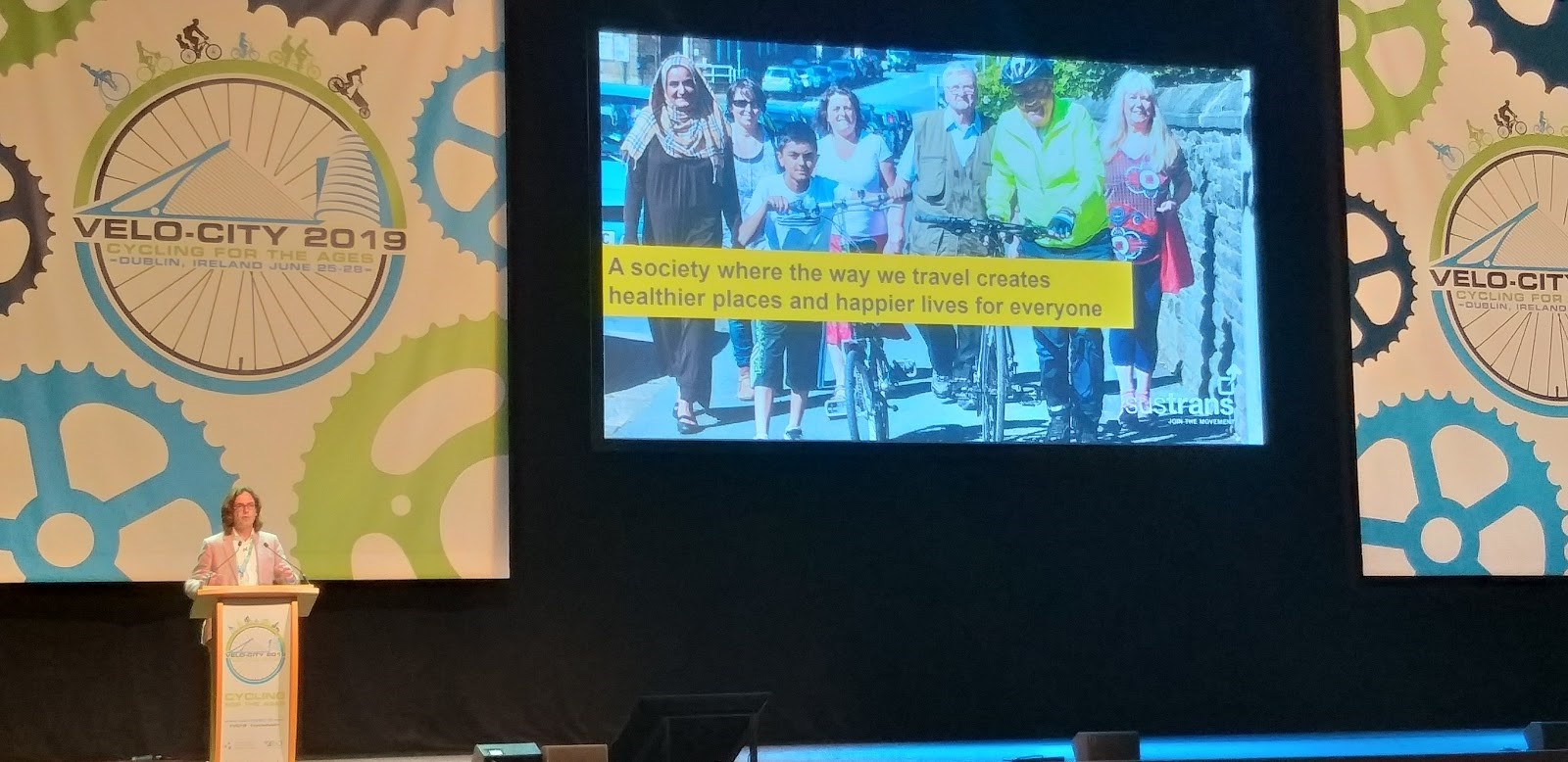
‘Infrastructure from the City to Greenways’ Plenary
Day three of Velo-city 2019 began with a stimulating plenary on ‘Infrastructure from the City to Greenways’!
Infrastructure is the backbone of cycling development. In different contexts and cities, different approaches are taken. For some time now, the discussion between vehicular cycling versus segregated infrastructure has been the big focus, especially in the urban environment. Last but not least, infrastructure is also key when the longer journeys goes through green areas and unused infrastructure – train tracks - can be refurbished to make leisure cycling and commuting possible through nature. All of this and more was the focus of this morning’s plenary.
The session kicked off with Mr. Burkhard Stork, Executive Director of the German Cyclists’ Association ADFC. Mr. Stork dove deeper into the opening sentence of the plenary description: “Infrastructure is the backbone of cycling development”. In doing so, he spoke about the 1970s and the then car-dominated cities of Amsterdam and Copenhagen, playfully noting that “Cycling development is not in their genes but in their policy decisions.”
He proceeded to elaborate on the popularity of vehicular cycling, citing design standards from the US and questioning of course this notion of effective cycling as vehicular cycling with a borrowed quote: “Riding a bike should not require bravery”. ADFC he mentioned, overcame this idea which has admittedly delayed development of cycling networks for decades in cities around the world, closing with the latest infrastructure developments in Berlin of segregated bike lanes.
Dr. Jennifer Dill, a Professor of Urban Studies and Planning at Portland State University made the case for bicycle infrastructure, and in particular comfortable bicycle infrastructure. “To increase cycling for transport we have to build protected bike lanes and bike boulevards” she added. She proceeded to define bike boulevards as neighbourhood greenways which take low traffic streets, use traffic calming methods and add safer crossings.
She noted that “bike infrastructure in an unsupportive environment will not work”. Supportive environments entail flat surfaces, nearby destinations and well-connected low-traffic streets. A national survey conducted by Dr. Dill found that increasing separation between the cyclist and motorized traffic increases both the self-proclaimed propensity to cycle and actual cycling trips. She concluded by noting that we have to “move away from being a place for the strong and fearless to a comfortable place for all ages and abilities”.
Mr. Xavier Brice, Chief Executive Officer of Sustrans presented the work they have been doing in the UK on Paths for Everyone, and echoed the previous speakers in saying that the narrative of vehicular cycling favours the risk-prone cyclists. Presenting the National Cycle Network of the UK, Mr. Brice began by explaining the origins of the now nation-wide network - an old railway line in Bristol which saw the gradual removal of traffic, evolved into disconnected cycling routes around the country in place of old railways. Since 1996 the Network grew to 16,000 miles and covers every region and country of the UK, making it the only infrastructure that joins all of the UK, seeing 750 million trips last year.
However, in the “rush for miles” the network was compromised in quality he mentions. One-third of the network is on traffic-free roads, but two-thirds are still on-roard infrastructure. Sustrans with the programme Paths for Everyone, aspires to achieve a traffic-free network not only for cyclists, but for children, elders, pedestrians, etc. “If we can’t share a path together, then what hope is there for us”, he concluded.
Ms. Anne Graham, Chief Executive Officer of the National Transport Authority in Ireland, presented on the cycling development of Dublin within NTA strategic documents such as The Transport Strategy for Greater Dublin 2016-2035, the National Development Plan 2018-2027, and the Climate Action plan of 2019. Ms. Graham mentioned that now cycling is a key transportation mode for Dublin and Ireland, noting the number of cyclists has tripled since last Velo-city in Dublin during 2005. Among the latest developments on the national level, Ms. Graham stated that the NTA is setting up a New Cycle Office to speed up the deployment of cycling infrastructure, which she admitted has not been up to par so far.
Network/Project Involved:
Contact the author
Recent news!
Upcoming events
Contact Us
Avenue des Arts, 7-8
Postal address: Rue de la Charité, 22
1210 Brussels, Belgium









